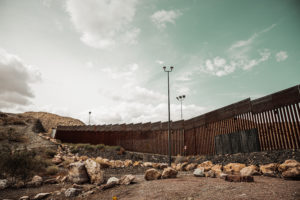Increased migration at the U.S. southern border has dominated the headlines in recent weeks – from news about Title 42 remaining in place to President Biden’s recently announced border plan to images of migrant families waiting outside crowded shelters and transported to other cities. There’s been a lot of news and it’s hard to keep track of it all. So, here’s a quick breakdown of the latest border-related headlines:
1. Title 42 expulsions, initially scheduled to be lifted last month, remain in place at the border.
Last month, a Supreme Court ruling kept Title 42 in place. This pandemic-era policy — which has been used by both the Trump and Biden administrations to rapidly expel arriving asylum seekers without providing them an opportunity to seek humanitarian protection — has proven to be an ineffective border management tool. Its use has significantly increased the rate of repeat border crossings and undermined effective border enforcement. Title 42 expulsions have been a boon to cartels and smugglers at the border, returning vulnerable migrants into dangerous situations that have led to thousands of kidnappings, rapes and violent assaults.
Title 42 has failed to treat arriving migrants with dignity or to create a secure and orderly border. This policy has only reduced order at the border, puts migrants in danger, and benefits smugglers and cartels. There are many better solutions, including these 42 border solutions, that lead to a more humane, more orderly, and more secure border, and numerous ways we can create alternative pathways for those seeking refuge in the U.S.
While many vulnerable migrants continue to be expelled under Title 42, others have been exempted from the policy for humanitarian reasons or because they come from countries where they cannot be rapidly returned (though that is changing – more on that below).

2. Biden visited the border and released a new border plan.
Ahead of the president’s visit to Mexico City for the North American Leaders Summit with Mexican President Andres Manuel Lopez Obrador and Canadian Prime Minister Justin Trudeau, Biden stopped in El Paso to meet with local officials and leaders to discuss the situation at the border. Before his visit, he announced a new border plan, which is meant to curb the number of unlawful crossings and increase border security.
Some notable proposals include the expansion of a humanitarian parole program previously used only for Venezuelans to those from Nicaragua, Haiti, and Cuba, allowing some prospective migrants with resources and connections to the U.S. to apply from their home countries and avoid the journey to the border. The parole program will be contingent on a second piece of the plan: The expansion of Title 42 expulsions to nationals of the aforementioned countries who do arrive at the border seeking protection. Other elements of the new plan include an online portal to streamline processing at ports of entry, expanding coordination with and support for border cities, and a proposed asylum ban on those transiting through third countries on the way to the U.S., who have failed to first seek protection there.
Though certain pieces of the president’s plan are positive steps to address the challenges at the border – many of which we’ve called for, other parts of the policy raise serious concerns. The limited parole program cannot be a substitute for the right to asylum protections at the border. Expanded use of Title 42 and the proposed asylum ban fail to recognize the journey many migrants take to the U.S. Southern border, and the challenges and threats they face that force them to consider leaving their homes.

3. Some migrant shelters along the border are reaching capacity.
Some reports suggest arrivals may be beginning to dip, but in recent months large numbers of migrants continue to arrive seeking protection and the opportunity for a new life. Those who are exempted from Title 42 have been processed under our immigration laws and allowed to pursue asylum claims.
Some areas are struggling to properly care for the newly arrived migrants. Recent reports suggest the city of El Paso is struggling to keep up with the demand, leading to overcrowding. Many arriving migrants are sent to government-run shelters in the city or being transported to other cities like Denver, which are helping to alleviate the capacity issues along the border. Others are heading to shelter networks run by non-profits and churches. We need to ensure proper coordination and funding to allow these cities and nonprofits to serve effectively as spaces of welcome.
We recently released an interactive journey to the U.S. Southern border to help you understand the numerous reasons people migrate and the challenges migrants face when seeking asylum.
These challenges will continue to exist without much-needed fixes to our immigration system. It’s time for Democrats and Republicans in Congress to come together to modernize our border security and management. Join us in urging Congress and the Biden Administration to work together to advance permanent solutions and manage our border.

